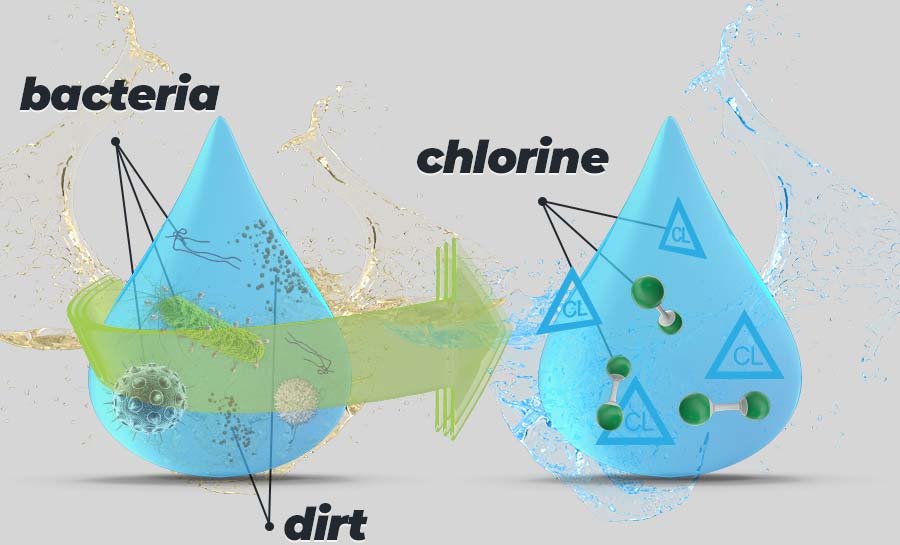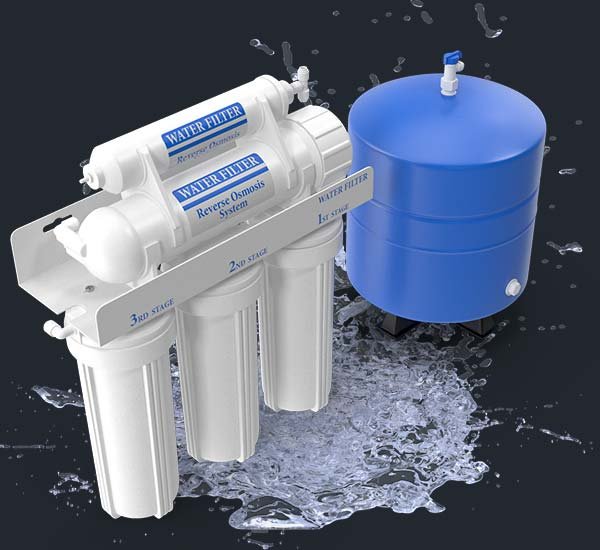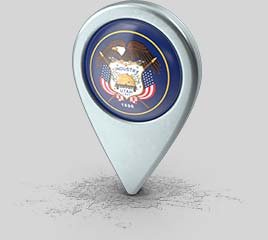Respiratory Issues:
Irritation: Inhalation of chlorine fumes during activities such as showering or washing dishes can irritate the respiratory tract, leading to symptoms like coughing, shortness of breath, and a sore throat.
Asthma: Chlorine exposure can exacerbate asthma symptoms and other respiratory conditions.
Skin and Eye Irritation:
Dermatitis: Direct contact with chlorinated water can cause skin irritation, dryness, and eczema, especially for individuals with sensitive skin.
Eye Irritation: Chlorine can irritate the eyes, causing redness, itching, and discomfort.
Gastrointestinal Issues:
Upset Stomach: Ingesting water with high chlorine levels can cause stomach discomfort, including nausea and cramps.
Carcinogenic Effects:
Disinfection Byproducts (DBPs): Chlorine can react with organic matter in water to form disinfection byproducts like trihalomethanes (THMs) and haloacetic acids (HAAs). Long-term exposure to high levels of DBPs has been associated with an increased risk of cancer, particularly bladder and colorectal cancer.
Kidney and Liver Issues:
Hemolytic Anemia: In rare cases, high chloramine levels can cause hemolytic anemia, a condition where red blood cells are destroyed faster than they can be made.
Sensitivity: Individuals with pre-existing kidney or liver conditions may be more sensitive to chloramine in drinking water.
Hemodialysis Concerns:
Toxicity: Chloramine can be toxic to individuals undergoing hemodialysis if not properly removed from water used in the dialysis process. Special filtration is required to ensure safety for these patients.

Public water supplies originate from different sources, some more contaminated than others. The contaminants naturally found in groundwater make their way through the pipes and trickle into communities if not treated. That’s why most municipal water systems use chlorine and chloramine as disinfectants to kill disease-causing germs, such as salmonella and E. coli, before it flows into homes for use.
Disinfection:
Primary Purpose: Chlorine is widely used to disinfect drinking water by killing bacteria, viruses, and other pathogens that can cause waterborne diseases.
Historical Use: Chlorine has been used as a disinfectant in public water systems since the early 20th century, significantly reducing incidences of diseases such as cholera, typhoid fever, and dysentery.
Residual Protection:
Maintaining Water Quality: Chlorine provides a residual effect, meaning it continues to disinfect as water travels through the distribution system, helping to prevent contamination.
Ease of Use and Cost-Effectiveness:
Availability: Chlorine is readily available and relatively inexpensive, making it a practical choice for large-scale water treatment.
Ease of Application: It can be easily added to water and measured to ensure proper disinfection levels are maintained.
Why Chloramine:
Extended Protection: Chloramine, which is formed by combining chlorine with ammonia, remains in the water distribution system longer than chlorine, providing prolonged disinfection and reducing the likelihood of microbial regrowth.
Lower DBPs: While chlorine can react with organic matter in water to form disinfection byproducts such as trihalomethanes (THMs) and haloacetic acids (HAAs), chloramine produces fewer of these byproducts, making it a safer option in terms of long-term exposure.
Less Noticeable: Chloramine has a less pronounced taste and odor compared to chlorine, improving the palatability of drinking water.
Stability in Distribution Systems: Chloramine is more stable than chlorine, which can dissipate quickly. This stability ensures consistent disinfection throughout the entire water distribution system, particularly in large or complex networks.
Removing chlorine from your drinking water can be achieved through several effective methods. Here are the most common ones:
1. Activated Carbon Filters:
How it Works: Activated carbon adsorbs chlorine and other organic compounds from the water.
Effectiveness: Highly effective at removing chlorine, as well as improving taste and odor. These filters are commonly found in pitcher filters, faucet-mounted filters, and under-sink systems.
2. Reverse Osmosis (RO) Systems:
How it Works: Water passes through a semipermeable membrane that filters out chlorine and other contaminants.
Effectiveness: Very effective at removing chlorine, along with other impurities such as heavy metals, TDS, and microorganisms.
3. Distillation:
How it Works: Water is boiled to produce steam, which is then condensed back into liquid form, leaving chlorine and other contaminants behind.
Effectiveness: Removes chlorine effectively, as well as a wide range of other contaminants.
4. Boiling:
How it Works: Boiling water for 15-20 minutes can evaporate chlorine.
EEffectiveness: Simple and effective for removing chlorine, but not suitable for removing other contaminants.
5. Chlorine Neutralizers:
How it Works: Chemical agents such as potassium metabisulfite can neutralize chlorine.
Effectiveness: Effective for removing chlorine, often used in aquariums and for brewing, but not commonly used for drinking water due to the introduction of other chemicals.

Tips for Choosing a System:
Water Consumption: Consider the amount of water you need to treat daily.
Maintenance: Regular maintenance, such as replacing filters, is essential for effective chlorine removal.
Combination Filters: Many filtration systems combine multiple methods (e.g., activated carbon with RO) for comprehensive water treatment.
Installation and Usage:
Point-of-Use Systems: Systems like countertop, under-sink, and faucet-mounted filters treat water at a single tap.
Whole-House Systems: These systems treat all the water entering your home, ensuring chlorine-free water throughout.

Our water quality experts will show you exactly what contaminants are in your water with independent testing.
Combat Dry and Cracked Skin: The Impact of Hard Water and Soap over Usage.
Discover How Many Particles Your Family's Drinking Water Contains.
Reveal Your Water's Particles and How we can Eliminate those Toxins.
Reveals the difference between their water and filtered water - Consequence of doing NOTHING!
Identifying Toxins in Your Water: Empowering You to Choose What Stays or Goes.
Click the button below and complete our quick survey to get started with our water specialist!
Click to Schedule-Free Water Test-